Significance
The True Buddha School is an emerging branch of the esoteric (Vajrayāna) Buddhist sect in Taiwan, and Lei Tsang Temple in Caotun is its operational center and largest base in the country. The temple is unusual in that it is a religious center for Taoism, exoteric Buddhism, and esoteric Buddhism. Symbols and statues representing all three religions fill the interior. The temple itself exemplifies the diverse religious culture of Taiwan, and at the same time, is also a wonderful illustration of religious syncretism that is frequently practiced in Chinese society.
History
Lei Tsang Temple, Caotun is the religious center of the emerging True Buddha School in Taiwan. In 1979, its founder, Lu Shengyen, arrived at Caotun’s Hu Mountain for the first time and found that the place exuded peace and spirituality. He was inspired to write the phrase, “Thunder (léi) roams the dharma realm; Hidden (tsáng) within, Tathāgata has come.” After the construction of Lei Tsang Temple in Seattle and the True Buddha Rainbow Temple in North Bend, Washington, Lu’s followers donated the money and land needed to build Lei Tsang Temple at Hu Mountain in 1987. The temple was completed twenty years later in 2007. The temple complex contains three main structures: the seven-storey Main Hall and two side annexes. A large plaque inscribed with the name of the temple hangs at the center of the Main Hall. It is decorated with nine dragons, acanthus leaves, and fish and cloud motifs. To further promote the True Buddha School, Lu later established the True Buddha Waider Buddhist College and Lotus Light Charity Society.
Special Features

1A Traditional Temple Design Lei Tsang Temple is built in traditional style with a hip-and-gable roof with double eaves. The main structures include the Main Hall, the left and right annexes, the Hall of the Queen Mother of the West (jīnmǔ), the Realm of the West (xīfāngjìng), and the Tower of Usnisa Vijaya Dharani. The Main Hall, the annexes, and the Hall of the Queen Mother of the West are faced with golden glazed roof tiles and white cement walls. The roof of the Main Hall has six gables carved with the vajra cross motifs. The vajra cross is a unique religious instrument representing unwavering concentration. It symbolizes the destruction of the trivisa (three innate flaws) and all demons, and represents the divine power of the Buddha, Bodhisattvas, and Vajrapani. This is a unique feature of Lei Tsang Temple.
Lei Tsang Temple is built in traditional style with a hip-and-gable roof with double eaves. The main structures include the Main Hall, the left and right annexes, the Hall of the Queen Mother of the West (jīnmǔ), the Realm of the West (xīfāngjìng), and the Tower of Usnisa Vijaya Dharani. The Main Hall, the annexes, and the Hall of the Queen Mother of the West are faced with golden glazed roof tiles and white cement walls. The roof of the Main Hall has six gables carved with the vajra cross motifs. The vajra cross is a unique religious instrument representing unwavering concentration. It symbolizes the destruction of the trivisa (three innate flaws) and all demons, and represents the divine power of the Buddha, Bodhisattvas, and Vajrapani. This is a unique feature of Lei Tsang Temple.
2The Main HallThe Lei Tsang Temple complex consists of three main structures, the Main Hall and two annexes. The total area is approximately 1,650 square meters. The Main Hall is seven-storeys high. Its interior space is the highest of any temple in Taiwan. The four golden columns, or Sumeru Dragon Columns, inside the main hall are inscribed with the poem, “Pray to Buddha, manifest He shalt; Recite the mantra, ascend thou shalt. Meditate, the emptiness enlightens; Do good deeds, a world beneficent.” The floor is covered with imported Spanish stone, and the interior corridors are faced with Brazilian granite to emphasize the grandeur of the Main Hall and create a solemn, majestic atmosphere for worship. The statues of Amitābha, Avalokiteśvara, and Mahāsthāmaprāpta are 9.6 meters tall. The statues of Mañjuśrī and Samantabhadra are 7.8 meters tall, and Skanda and Samghārāma Bohdisattva are 6.6 meters tall.
3The Mandala The mandala is located towards the lower part of the Main Hall, and is divided into a Buddhist section, a Vijra section, a Lotus section, the Shrine of the City God, and the Shrine of the God of Wealth. Buddhist, Taoist, and Tantric Buddhist gods are worshipped here, including Padmakumara, the Queen Mother of the West, the Five Dhyani Buddhas, the Eight Yidams of the True Buddha School, and the Four Guardian Kings of the World. The City God Bohdisattva is on the left and Red God of Wealth on the right.
The mandala is located towards the lower part of the Main Hall, and is divided into a Buddhist section, a Vijra section, a Lotus section, the Shrine of the City God, and the Shrine of the God of Wealth. Buddhist, Taoist, and Tantric Buddhist gods are worshipped here, including Padmakumara, the Queen Mother of the West, the Five Dhyani Buddhas, the Eight Yidams of the True Buddha School, and the Four Guardian Kings of the World. The City God Bohdisattva is on the left and Red God of Wealth on the right.
4The Usnisa Vijaya Dharani Pagoda The Usnisa Vijaya Dharani Pagoda stands eight meters tall atop the hill to the left of Lei Tsang Temple. The exterior is carved with the Usnisa Vijaya Dharani mantra. Visitors may go around the tower and recite the sutra and mantra to clear their minds. Worshippers believe that by doing so, they can attract good and avoid evil.
The Usnisa Vijaya Dharani Pagoda stands eight meters tall atop the hill to the left of Lei Tsang Temple. The exterior is carved with the Usnisa Vijaya Dharani mantra. Visitors may go around the tower and recite the sutra and mantra to clear their minds. Worshippers believe that by doing so, they can attract good and avoid evil.
Reminders
The two major religious ceremonies held at Lei Tsang Temple are Spring Prayers and the pudu ceremony (a ceremony conducted during the Midsummer Ghost Festival to help ghosts return to the spirit realm). The public is welcome to participate in these and in the weekly Homa (a votive ritual). Visitors may hike along the trail to the left rear of the temple, or behind the Main Hall, where one can enjoy spectacular views of the Taichung basin and visit scenic Caotun Village.
Panoramic
Directions